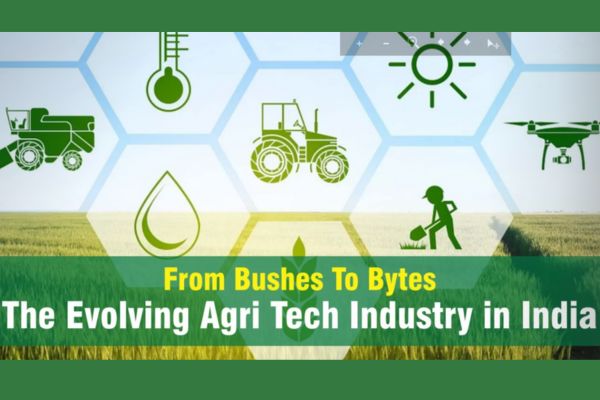Agriculture may add almost $600 billion to India’s GDP by 2030, which would be a 50% increase from 2020. But in order to get there, India needs to boost the industry’s productivity and growth. Agricultural technology, or agtech, is essential to accelerating India’s transition into a farming powerhouse. In agtech or agritech, India falls behind industrialized farming nations. Putting simply, India’s farmers are at a competitive disadvantage since half of them lack basic farming equipment, three out of every four farms face crop damage from weather and pests, and half of them do not have access to traditional funding sources. Credit-worthy individuals frequently pay inflated interest rates that are 10–25 percent higher than market rates.
Key Factors Driving the Indian Agritech Industry
According to Startup India, which is an Indian Govt. website mentions that there are four key factors have driven the Agritech industry’s remarkable tenfold growth over the last three years: the growing digital reach throughout India, the COVID-related disruptions to the supply chain, the increasing demand from consumers for high-quality produce, and the increasing interest from private equity and venture capital. There are now over 2800 AgriTech firms that Startup India has recognized [Startup India Database as of December 31, 2023]. These Indian AgriTech companies are leading innovation and changing the country’s agricultural practices. These are a few sectors where AgriTech companies are bringing about change.
Digital Agriculture
Scientists, agricultural professionals, and farmers can now access the raw data they need to turn the agricultural sector into a digital-first industry that will help feed the 800 million people who do not currently have access to basic food security. This is made possible by digital agriculture and data management tools. Public pressure and regulatory needs for environmentally sustainable agricultural methods are the second driving driver behind digital agriculture. Customers are calling for more nutritious, higher-quality food products that are sourced sustainably. Because of this, sustainability and digital agriculture go hand in hand.
For farmers, digital agriculture provides a multitude of improvements. For instance, IoT-connected devices can automate equipment and robotic processes, maximize the use of fertilizer and irrigation, and save growing expenses.
By using digital agriculture, farmers can gain more information and control over inputs for crop health and yields by having a field-level view. Digital agricultural insights have the potential to improve farmer income and lower operating costs, all while having a neutral or even beneficial effect on the environment.
Smart Farming
The use of cutting-edge technologies and data-driven farm operations to maximize and enhance sustainability in agricultural production is referred to as “smart farming,” or “smart agriculture.” Artificial intelligence (AI), automation, and the Internet of Things are among the technologies utilized in smart farming (IoT).
While new tools and technology have always been essential to farm management and food production, the development and use of smart farming technologies are currently driven by pressing challenges. The most important one is food security: the International Monetary Fund estimates that by 2050, food production will need to rise by 70% in order to keep up with the world’s population growth. Forecasts indicate that by 2050, the global population will have increased by 34%. Increased agriculture yields and efficient use of natural resources are necessary. The situation is getting worse due to climate change. Because of all of this, including efficient techniques into the work is essential. How may local farming benefit from smart farming? Growers may now use tools and strategies to optimize virtually every aspect of their operations, from monitoring fields and delivering pesticides using drones to harvesting and establishing the ideal greenhouse climate, thanks to today’s service and technology suppliers. A different strategy known as “climate smart agriculture” focuses on how weather affects agricultural decision-making.
The Growing Application of AI in Farming
Significant progress is being made by AI in the early diagnosis and detection of agricultural diseases. For example, a study that appeared in the journal Computers and Electronics in Agriculture showed how an AI system could identify apple scab, a frequent disease of apple trees. With the use of a neural network that was trained on a dataset of photos of apple leaves, the system was able to identify the presence of disease with an astounding 95% accuracy.
In wheat fields, yellow rust detection is another real-world example. Through the use of machine learning techniques, researchers were able to accurately identify contaminated spots in photographs of wheat fields. By facilitating early intervention, this use of AI reduces loss and saves time.
Vital Collaboration to Drive Smart Agriculture in India
The AI4AI (AI for Agriculture Innovation) initiative was introduced by the World Economic Forum India’s Centre for the Fourth Industrial Revolution, the state of Telangana, and the Union Ministry of Agriculture in India. Organizations from industry (agri-inputs, consumer, food processing, finance, insurance, and technology enterprises), the startup ecosystem, and farmer cooperatives are involved, which reflects the complexity of the situation.
This project held more than 45 sessions over the course of eight months, beginning in June 2020, to talk about the difficulties smallholder farmers face and how 4IR could be of assistance. A proposal called AI4AI is the result of these conversations, and it aims to assist smallholder farmers by utilizing modern technologies like blockchain, drones, and artificial intelligence.
Drawing Investments in the Agri Tech Industry
The industry has drawn significant capital, with an average investment value of USD 13.4 million. This number demonstrates the high level of investor trust in the ability of AgriTech solutions to transform the agricultural industry. Furthermore, the participation of more than 10,000 investors demonstrates the broad range of interest in this area, from big venture capital firms to lone angel investors.
The fact that over 36,000 funding rounds have closed is more evidence of the industry’s dynamism. This figure shows the enormous amount of financial transactions as well as the ongoing innovation and growth in the AgriTech industry. Both new and existing businesses have benefited from these fundraising rounds, which have allowed them to grow, invest in R&D, and introduce cutting-edge innovations to the market.
The top investors in the AgriTech sector have made cumulative investments totaling over USD 7.5 billion, demonstrating their strong financial commitment and belief in the industry’s potential.
References: McKinsey and Company | Startup India | World Economic Forum

















